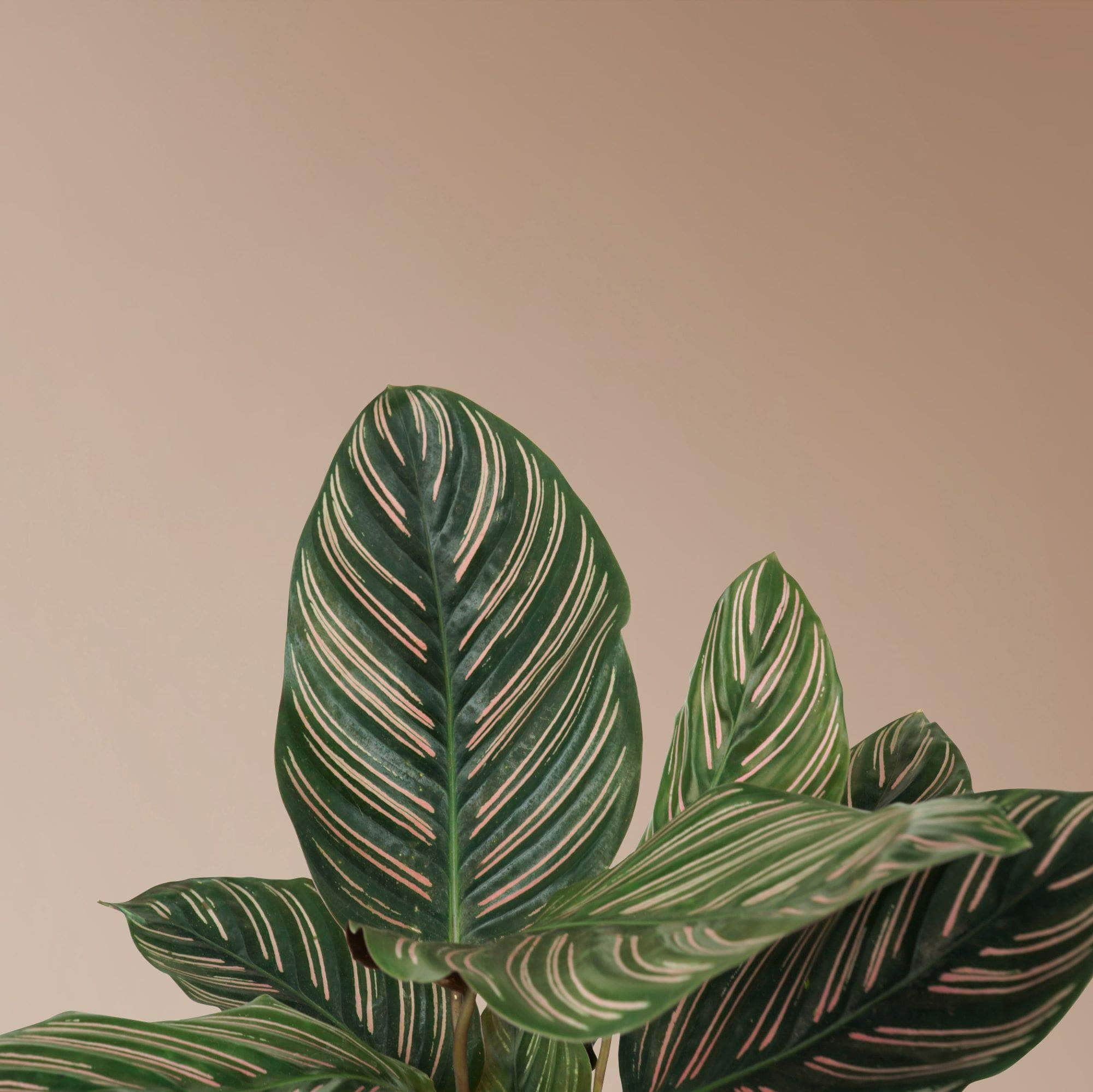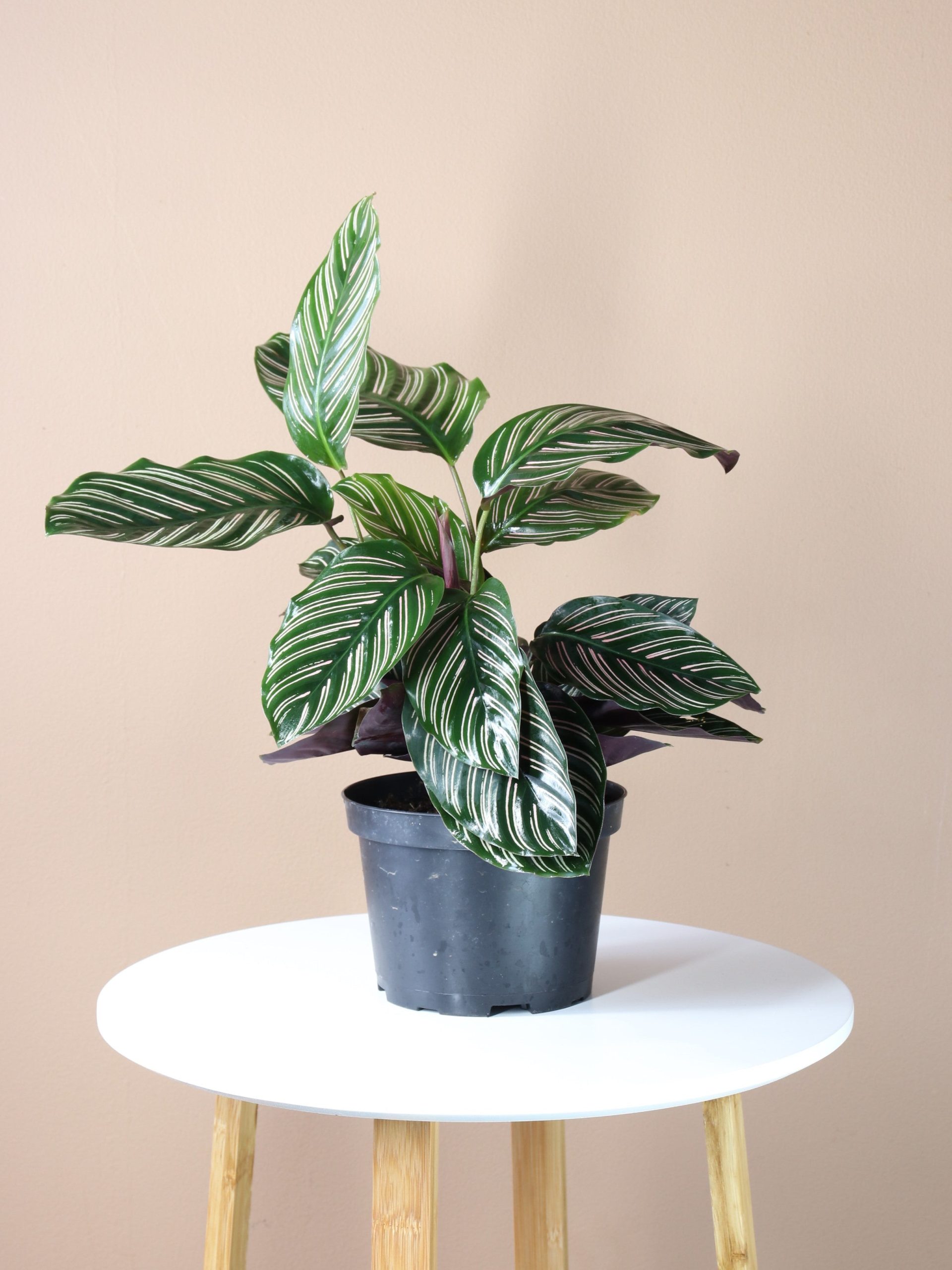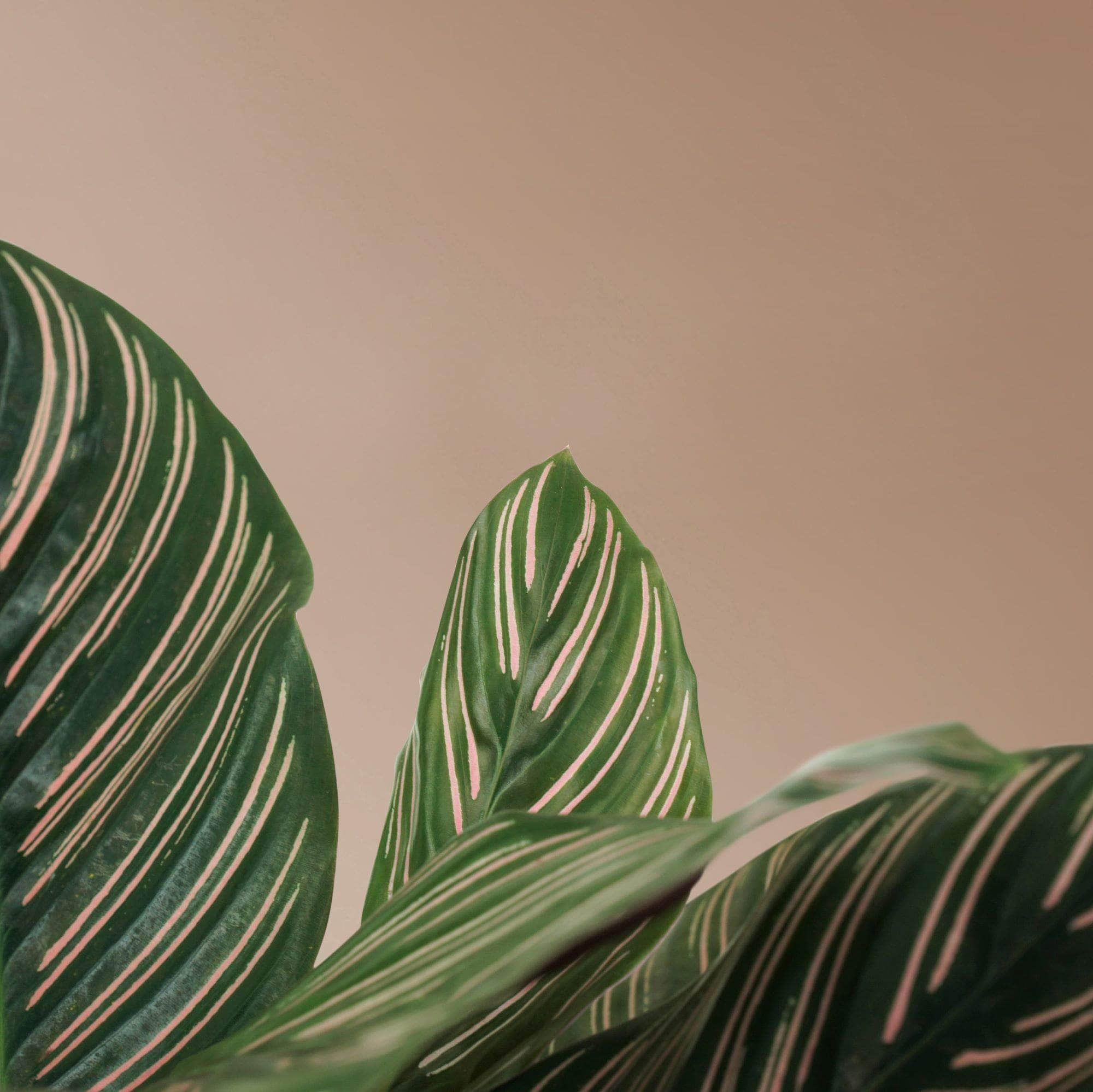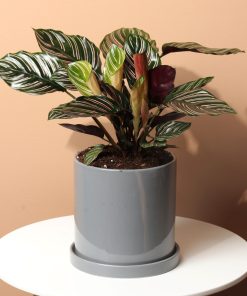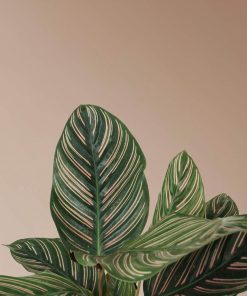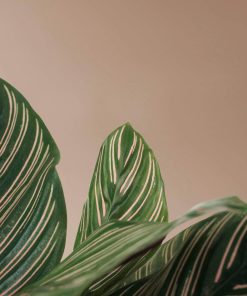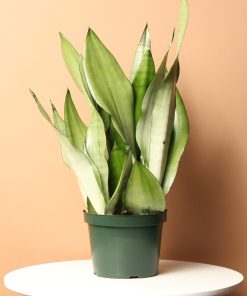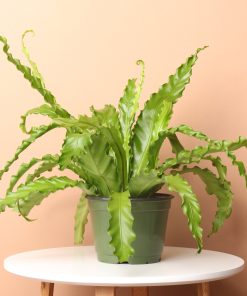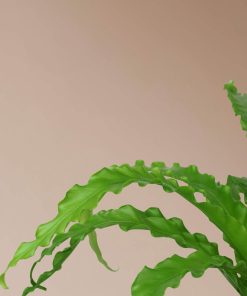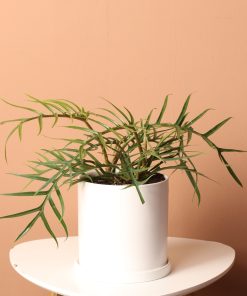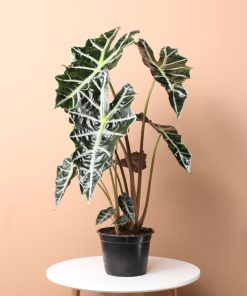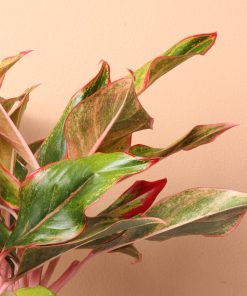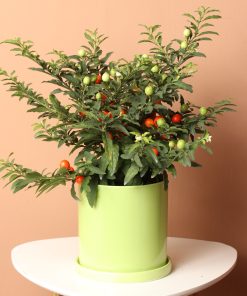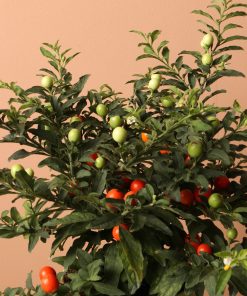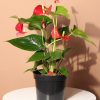The medium size Calathea Pinstripe is currently ready to be shipped from our greenhouse (shipping nationwide). It’s scientifically known as the Calathea ornate and casually known as the Pinstripe Plant. Native to South America, the Calathea loves bright rooms and high humidity but can get accustomed to medium light rooms. This compact, dark emerald stunner commands attention in any room with its interestingly striped foliage. All houseplants are carefully wrapped in packaging meant to keep them safe during transit. Order your Calathea Pinstripe ASAP.
Calathea Benefits
The Calathea Pinstripe has a few important benefits that can’t be overlooked. It’s a great air purifier for starters. Not only that, but its large leaves also make it a great plant to place next to others that need indirect bright light, as it can provide a barrier between harsh rays, much like what actually happens in rainforests and jungles. The Calathea is versatile too, it can be a great indoor plant, but you can also keep it outdoors during the appropriate seasons.
Dressed to Impress
Your Calathea ornate gives off an ornamental vibe and highlights any room it’s placed in. It will come dressed to the nines with its sleek, rich, sacramento colored leaves and contrasting strawberry pink pinstripes (sometimes the stripes may appear white). Whether you’re trying to dress up an office space, entertainment room, or entryway, the pinstripe is a head-turner that never disappoints.
Prayer Plant
Also a part of the ‘Prayer Plant’ or Marantaceae family, the Calathea opens and closes its leaves each day as the daylight moves into night. The leaves also raise or lower slightly when sunlight reaches different points in the day.
Keep it Humid and Filtered
It could be helpful to purchase a humidifier when you bring home your pinstripe plant, as it’s accustomed to weather from the tropics in South America, specifically on balmy rainforest floors. To reenact the lush habitat for your Ornate, it could be helpful to put it in bright, but indirect sunlight, to imitate the tree canopies nearby that normally block layers of the bright sunlight. If the plant receives too much direct exposure to the sun, it could cause the leaves to burn.
Now that you’re an expert with the Calathea Pinstripe, order this plant by 7PM est to get this plant shipped out of our greenhouse in New Jersey tomorrow (if you are wondering the arrival time, check with the zipcode validator on top of the Add To Cart). Seriously, our plant shipping solution is truly protective and innovative to ensure your plants arrive safe and intact! In case you were still wondering, we WILL send out the EXACT plant that you picked out, just like that of a local nursery or garden center, except we have more and fresher plants to choose from and you can’t find our PAFE fine ceramic planter options anywhere else other than our website 🙂
For any other questions or concerns, please don’t hesitate to reach out to us


